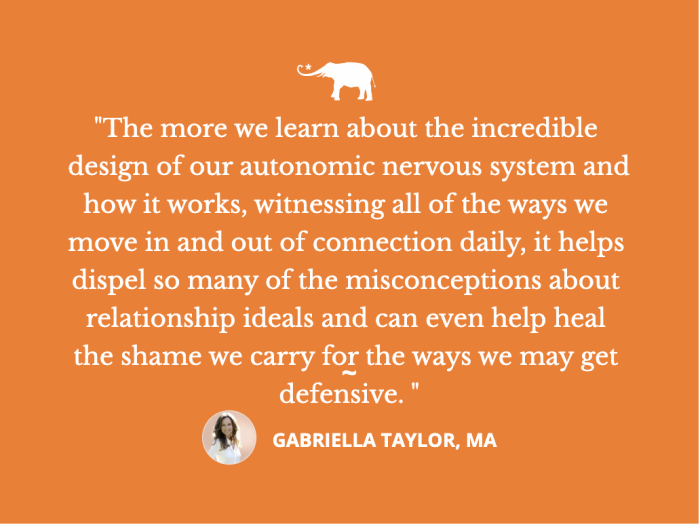Picture this: Stuck on a five lane highway in Los Angeles in excessive traffic, on a day where the climate crisis is bringing us a 100+ degree heatwave, a husband and wife suddenly start arguing about where to park, upon arriving an hour late to an event.
Suddenly, a simple situation turns into a heated argument. “You always start a fight before we go into an event! I’m never bringing you again!” says the husband.
The wife, shaken by the sudden explosion says “Fine! Go in without me!”.
What’s really happening here? Is this a couple on the brink of collapse? Are they just bad communicators? What pops into your head as you read this question? Are they doomed?
Better yet, have you ever found yourself suddenly fighting with, or running from, the one you love?
Maybe you’ve experienced this with your spouse, parent, child or friend. If so, do you try and analyze it, wondering if this is the sign of a poor match or a failed relationship? Why is it that we can so quickly melt-down into arguments that appear out of the blue?
While modern psychology may tell us that unresolved issues are at play, which may certainly be the case, what Polyvagal Theory shows us is that in these scenarios, what is often at cause is nervous system dysregulation.
You see, there is an automatic, unconscious conversation that is happening all of the time between us humans. An inborn survival response is constantly tracking for cues of safety or threat, connection or danger.
It does this through this amazing process called neuroception, which happens just below the level of conscious awareness, and is constantly tracking three different areas simultaneously, every second of our life.
- Inside our body (tracking changes in our body temperature, heart rate, breathing and other physiological functions)
- Outside environment (scanning for noises, sounds, lights, scents that might tell us if something is off)
- Between others (taking in the person’s facial expressions, vocal tones and body movements and more).
When we perceive a threat in any of these three areas, whether real or imagined, our body naturally goes into a survival response, which immediately sends us into flight, fight, flee, freeze or fawn.
As a relationship specialist, woman-centered coach and practitioner of Polyvagal Theory, I have learned to deeply respect the role of our autonomic nervous system and the crucial role of this in our relationships.
Back to the couple I described earlier. What was really happening was that the combined stressors of traffic, the extreme heat and being in an unfamiliar environment, while arriving late, all created a perfect environment for a relationship meltdown.
Both the husband and wife’s nervous systems went into a threat response and boom! A blow up ensued.
The good news? We humans are designed to cycle through these myriad threat responses and find our ways back to safety, multiple times a day. This is normal. Is it pleasant? No, not really, however, it is part of being alive.
The more we understand the crucial function of our nervous system-to-nervous system conversations, especially in relationship with our loved ones, we are able to recover more quickly. The trick is, once we come to accept that disconnection is to be expected, how do we find our way back to connection and safety?
As Dr, Stephen Porges, the founder of Polyvagal Theory says “Safety is in the body.’ Safety is an embodied experience — our nervous system either feels threatened or calm, as a biological survival response, independent of our thinking brain.
In other words, while we cannot necessarily will ourselves to control our bodily reaction to stress that makes us want to run away, shut down or fight back when we feel unsafe, what we can control is our understanding of this, which gives us tremendous choice and flexibility in how we recover. After all, the healthy model for secure attachment in relationships indicate we humans do well with 33% connection, 33% rupture and 33% repairing the rupture.
The more we learn to down-shift our threat response (once we assess that there is no real threat) and bring a sense of calm back online, the faster we can recover from these inevitable blow ups and repair by coming back into connection with our loved one.
The goal is less about eliminating stressors and not getting activated, it’s more about creating an inborn resiliency where we teach ourselves how to calm back down, so we can return to a sense of well-being.
So, how do we do this? The couple I referenced above was actually my husband and myself. I’ll walk you through how I helped myself return to a sense of harmony in myself and with him.
First, I asked myself, is my reaction, at this time, proportionate to the circumstances? It was not. I was able to assess that in fact, while I felt threatened, I was not actually in danger.
I then surveyed my environment and checked in with the three areas (inside, outside and in between) that I mentioned above to see if there were any other real threats.
None to be found.
My husband wasn’t going to hurt me, a bomb wasn’t going off outside and my body sensations of stress were just temporary. I assessed that my subjective feeling of danger mismatched the outward experience, and reassured myself that I, in fact, was indeed safe.
Next, I reminded myself that the communication between our nervous systems had simply moved into threat detection and reacted accordingly, and that this is normal. I thanked our nervous systems for doing their best to keep us safe.
Finally, I began to actively look for cues of safety and connection. I took a moment to slow down and sense how good it feels to sit next to my husband, the fact that he even exists, and took a moment to just enjoy his silent presence. I turned my gaze to the beautiful purple blooms on the jacaranda trees lining the streets. I noticed the soft golden glow as the sun was setting and how luminous the gardens were. I took some moments to bask in the beauty around me and all of the glimmers of well-being that were present.
This practice actually helps the nervous system reset. How? When the ventral vagal nerve come back online is when we are in an autonomic state of regulation, and is how we feel warm, safe and connected.
I did all of this inside of me, as he was still down-regulating in himself. Eventually, his system returned to safety and we were able to talk and repair the rupture, so we in fact grew closer to one another, through this experience.
The more we learn about the incredible design of our autonomic nervous system and how it works, witnessing all of the ways we move in and out of connection daily, it helps dispel so many of the misconceptions about relationship ideals and can even help heal the shame we carry for the ways we may get defensive.
Beyond this, it empowers us to actually be the change we want to see in the world. As Dr. Porges has also said “If you want to improve the world, start by making people feel safer.”. I would add to this, if you want to improve your relationships, start by helping yourself and others feel safer.












Read 0 comments and reply